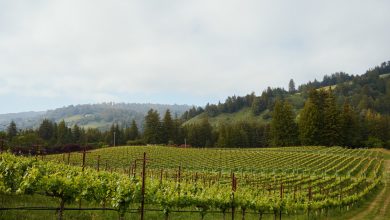One Day in the Heat: What Cooling Off Looks and Feels Like in New York

Parasols, paper fans, flowing dresses, floppy hats, portable neck fans. Everywhere, water: bottles sweating beads of condensation, water guns spraying in parks and inside apartments. Fire hydrants transforming into sprinklers.
These are some of the tools New Yorkers are using to work and play during the summer’s first heat wave, as daily temperatures near 100 degrees. As the planet continues warming, it will only get worse in summers to come.
On one long, sweltering day this week, city dwellers approached the challenge with a mix of ready-for-anything whimsy and deadly serious awareness that heat can kill.
It was a day so hot that one subway worker emerged blinking into the sun and cursed at it. So hot that swollen pavement stopped river bridges from opening for passing boats. Yet in the Flatbush section of Brooklyn, Noel Willis, a flagman at a road repair site, danced and sang as he twirled his Stop/Slow sign.

Noel Willis danced to his own reggae song, “Summertime Again,” at work in Brooklyn.Credit…Andrew Seng for The New York Times
“Singing keeps me cool,” said Mr. Willis, 60, stepping and swaying as the sun climbed through the late morning. “I’m singing, I’m working, I’m happy. I like to sing to entertain the people, dance to keep the job going.”
Compared to cutting sugar cane in Jamaica, where he grew up before moving to Queens, standing on blacktop in a hard hat and protective gear is not that hot, he said, singing a reggae song he had recorded under the name Noel Melody:
Summertime again
And the girls are getting hot
Watch all the girls walk around in this and that.
Around the same time in Washington Heights, two workers digging trenches for Con Edison struggled in heavy, fire-resistant gear. Work partners for seven years, they said they had noticed summers getting hotter and reminded each other to take extra breaks. But anti-idling laws rule out cranking up their truck’s air-conditioner.
“The past few years, it feels like it’s 90 degrees every day,” said one of the workers, Danny Monahan, 42, who was wielding a shovel. “It’s got to get done if it’s 10 degrees or 90 degrees. It’s not my favorite thing to do in the heat, but it is what is.”
As fossil-fuel emissions heat the planet — last summer was the hottest on record — extreme heat is a growing danger for cities. This week, parts of Europe are hitting temperatures once expected only in deserts and the tropics, and some of those areas in turn could be uninhabitable in the coming decades. Heat is more extreme in poorer areas and deadlier for vulnerable populations, and labor advocates are calling for stronger rules to protect workers.
Extreme Heat Around the World This Week
A summer of hot misery. It was a brutal week in several parts of the world that aren’t built for extreme heat, as Europe was ravaged by temperature spikes and wildfires. Some U.S. states broke heat records set during the Dust Bowl. Here’s a look at what happened:
United Kingdom. Britain endured its hottest day in history. Temperatures of over 40 degrees Celsius — 104 degrees Fahrenheit — were recorded in parts of the country on Tuesday for the first time ever.
France. Europe’s heat wave left a trail of raging wildfires, lost lives and evacuated homes across the continent, but the greatest damage was in France. Blazes in the country’s southwest forced more than 37,000 people to evacuate.
United States. About 100 million Americans from California to New England were under heat advisories and warnings on Wednesday. Parts of the country experienced temperatures not seen since the Dust Bowl era in the 1930s.
Central U.S. Oklahoma City broke a daily heat record on Tuesday with a temperature of 110 degrees Fahrenheit — tied for the state’s highest-ever July temperature. Austin, Texas, topped 100 degrees for over 40 straight days, with more in the forecast.
U.S. East and West Coasts While these regions were mostly spared, the Northeast got an unwelcome taste this week, as heat indexes topped 100 degrees in New York, Philadelphia and elsewhere. The scorcher will last into next week, when the Pacific Northwest will also heat up.
Staying safe. In the United States, the dangerous heat wave is unlikely to let up soon. Keep yourself and your loved ones cool, hydrated and healthy with these safety tips.
New Yorkers with outdoor jobs, or without effective cooling at home, showed off their ingenuity across the five boroughs on Wednesday.
For Jerome Sanford, 36, the heat layered atop another crisis: the pandemic, which he fights as a mobile Covid-19 tester. On a scorching street near Prospect Park, he yearned for a mist-spraying fan. Instead, he ducked into the cool library for breaks.
Rosalyn Campbell, 63, a nanny sheltering in the library’s shadow, said she studies the movement of light as if reading a sundial, threading paths shaded by buildings to cool spots under trees and playgrounds with sprinklers. One of her charges, Siya, 9, shouted out her own solution: “Water guns and water balloons!”
Ehab Salem, 46, an Egyptian immigrant, had fewer options. To capture foot traffic at the Brooklyn Museum, his halal food cart stood in direct sunlight. He worked over blue-hot gas flames and a sizzling fryer, barely cooled by a grease-covered fan the diameter of a basketball.
“I drink a lot of water; I have a small fan,” he said. “I am good.”
Kemoy Walker, 30, prepared a hydration system for his day repairing washer-dryers. The night before, he put six water bottles in his freezer — “one bottle for each job.” By midday he was in Flatbush with two empties on the seat of his service van. A thawing bottle occupied the cup holder. The last three lay in the not-that-cool shade of the dashboard.
“It’s OK when you’re in the van,” he said, wiping his brow. “When I come out, it’s a whole different situation.”
Across town, the high-noon sun glinted off orange lifeguard umbrellas and electric-blue water at the Highbridge Pool. Whistles and shrieks echoed Hannah Grier’s nephews, Maddox Diaz, 4, Alex Diaz, 10, and Nicholas Williams leaped and played in the huge public pool in Washington Heights. Ms. Grier, 44, said that each morning that she wakes up to another sweltering heat-wave day, she activates the emergency heat plan she has followed since childhood.
“Breakfast, pool, breakfast, pool, breakfast, pool,” she said.
One lifeguard, Anthony Almonte, worried that his 31st summer at the pool could be tough, with the deep end closed because of a lifeguard shortage and the baby pool being renovated.
“This one is really going to be bad,” he said.
But Loraine Villegas, working on her tan, saw good news in the crowds after three years of pandemic life.
“Everyone is more together this year,” she said. “Being able to live every day.”
The temperature was still in the 90s as evening approached, and heat waves are most dangerous without nighttime cooling.
But two open fire hydrants relieved neighbors in the Foxhurst section of the Bronx. A tire around each base held a board angled to arc the spray over the street, a system devised by Merlin Flow, whose tire business is nearby.
“I made it for everyone,” Mr. Flow, 34, said in Spanish. “For everyone to stay cool.”
Drenched, Ana Rivera, 33, and her two small children giggled and splashed. Mauro Zambom, 28, washed his car in the spray, after a day making 200 FedEx deliveries in an un-air-conditioned truck.
“I have to pay rent,” he said.
Bathers at Marcus Garvey Pool in Harlem were pleasantly surprised to find hours extended until 8 p.m. Terry Chan, 44, a commercial mover, brought his children for a break from fighting over the air-conditioner and sluicing themselves with water.
“My house is always flooded,” he said.
At sunset, families sought a waterside breeze by the Hudson River, especially after ConEd’s warning to limit use of air-conditioning to avoid blackouts. Damian Pieter, 43, had walked for three hours with his children, their mouths a garish Popsicle blue, but would not go home until darkness made their apartment bearable.
After dark, young men played basketball in the basement of the Manhattanville Community Center, one of scores of city cooling centers. Despite faulty air-conditioning, fans kept the court usable.
“Fan, cold water, no stress,” is how Charles Buckner, 20, a teacher there, beats the heat.
But he planned one more trick: a nocturnal visit to his classroom upstairs. “The AC is blasting there,” he said.
Matthew Sedacca contributed reporting.





